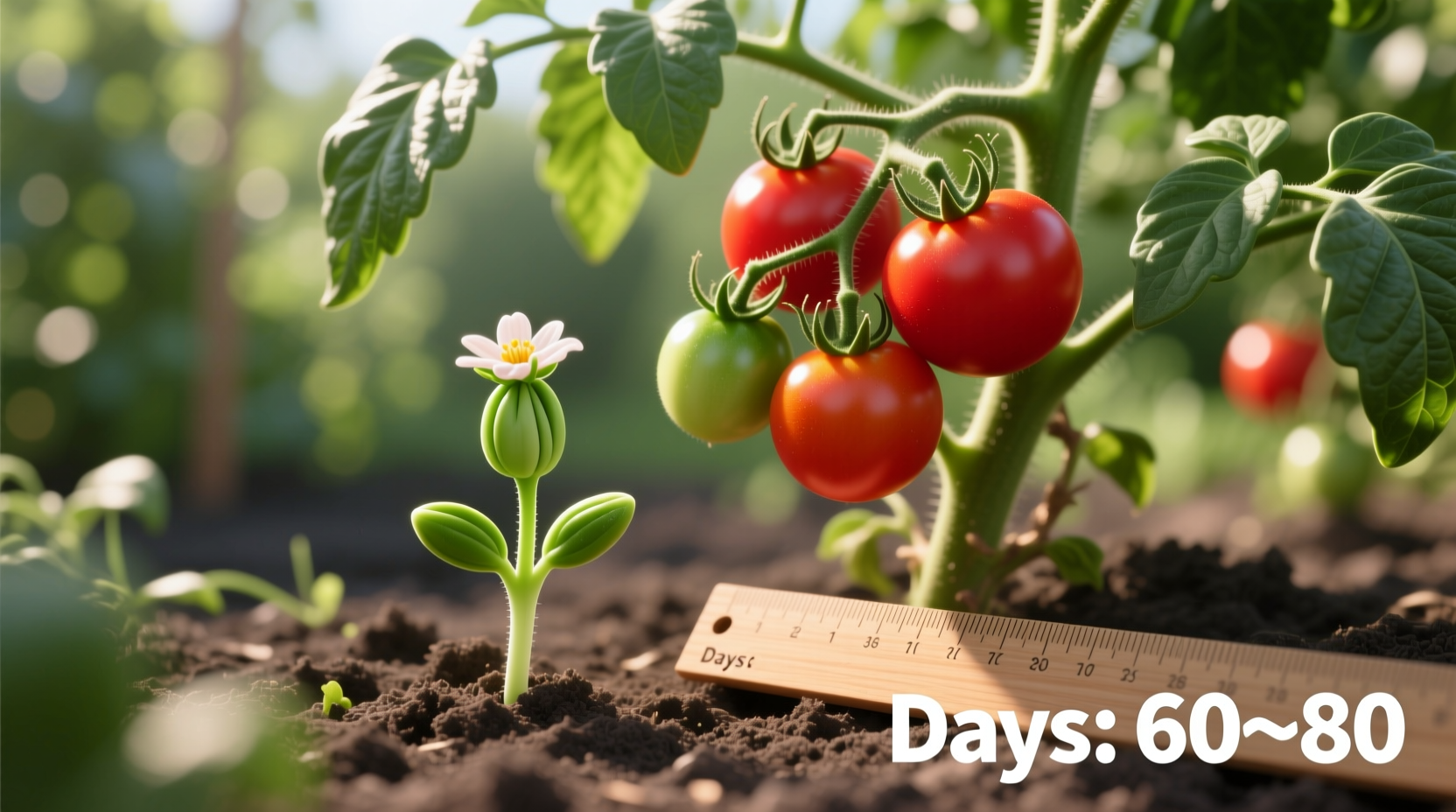Understanding tomato growth timelines is essential for planning your garden and ensuring a successful harvest. Whether you're a beginner gardener or looking to optimize your existing tomato patch, knowing what to expect at each growth stage helps you provide proper care and avoid common pitfalls.
Tomato Growth Timeline: From Seed to Harvest
Tomatoes progress through several distinct growth stages, each with its own timeframe. This timeline provides a general framework for what to expect when growing tomatoes:
| Growth Stage | Timeframe | Key Characteristics |
|---|---|---|
| Germination | 5-10 days | Seeds sprout and develop first roots |
| Seedling Stage | 4-6 weeks | True leaves develop; ready for transplanting |
| Vegetative Growth | 3-4 weeks | Rapid stem and leaf development after transplanting |
| Flowering | 2-3 weeks | Yellow flowers appear; pollination occurs |
| Fruit Development | 3-8 weeks | Green fruit forms and matures to color |
This timeline comes from research conducted by the Oregon State University Extension Service, which has documented tomato growth patterns across various climate zones. Their studies show that temperature fluctuations can accelerate or delay each stage by up to 15%.
Factors That Impact Tomato Growth Time
Several variables affect how quickly your tomatoes will mature. Understanding these context boundaries helps set realistic expectations for your specific growing conditions:
Tomato Variety Differences
Not all tomatoes grow at the same pace. The two main categories have significantly different growth patterns:
- Determinate varieties (bush tomatoes) - Complete their growth cycle in a concentrated period (typically 50-80 days from transplant). These set all fruit within a 2-3 week window and then stop growing. Examples: Roma, Celebrity, Bush Early Girl.
- Indeterminate varieties (vining tomatoes) - Continue growing and producing fruit throughout the season (typically 65-90+ days from transplant). These require staking or caging and produce fruit continuously until frost. Examples: Beefsteak, Cherokee Purple, Sungold.
Climate and Temperature Effects
Tomatoes are warm-season crops that thrive in specific temperature ranges. According to the USDA Agricultural Research Service, tomatoes grow best when daytime temperatures range between 70-85°F (21-29°C) and nighttime temperatures stay above 55°F (13°C).
When temperatures fall below 55°F or rise above 90°F, growth slows significantly. In cooler climates, you might add 10-20 days to standard maturity dates, while in ideal warm conditions, you might harvest earlier than expected.
Soil Quality and Nutrition
Well-draining soil rich in organic matter supports faster growth. Tomatoes require balanced nutrition, particularly phosphorus for flowering and potassium for fruit development. Poor soil conditions can add 1-3 weeks to the growth timeline as plants struggle to establish strong root systems.
How to Optimize Your Tomato Growth Timeline
While you can't change your climate, you can implement these evidence-based strategies to help your tomatoes reach maturity more efficiently:
Start with Quality Seedlings
Starting with healthy transplants rather than seeds can save 4-6 weeks in your growing season. When selecting seedlings, look for:
- Dark green, sturdy stems (not leggy)
- No signs of disease or pests
- Roots that fill the container without being root-bound
Proper Planting Techniques
Plant tomatoes deeper than they grow in their containers, burying up to two-thirds of the stem. This encourages additional root growth along the buried stem, creating a stronger plant that can absorb more nutrients and water, potentially reducing time to first harvest by 5-7 days.
Consistent Watering Practices
Irregular watering stresses plants and slows growth. Research from University of Minnesota Extension shows that tomatoes receiving consistent moisture (1-2 inches per week) reach maturity 8-12 days faster than those experiencing drought stress.

Common Growth Delays and How to Address Them
Several issues can extend your tomato's growth timeline. Recognizing these problems early helps minimize delays:
Slow Flowering
If your plants aren't flowering after 6-8 weeks post-transplant:
- Check nitrogen levels - too much nitrogen promotes leaf growth at the expense of flowers
- Ensure plants receive at least 6-8 hours of direct sunlight daily
- Gently shake plants during flowering to improve pollination
Delayed Fruit Ripening
When tomatoes form but take longer than expected to ripen:
- Reduce watering slightly once fruit sets (but don't let plants wilt)
- Remove some leaves to improve air circulation and sun exposure
- Consider using red plastic mulch, which research shows can accelerate ripening by 5-10 days
Regional Considerations for Tomato Growers
Your location significantly impacts tomato growth timelines. Gardeners in different regions should adjust expectations accordingly:
- Cooler northern climates: Focus on early-maturing varieties (50-60 days) and use season-extending techniques like black plastic mulch and wall-o-waters.
- Hot southern climates: Select heat-tolerant varieties and provide afternoon shade to prevent blossom drop during extreme heat.
- Short-season areas: Start seeds indoors 6-8 weeks before last frost date to maximize growing season.
According to the USDA National Agricultural Library, gardeners who align their variety selection with local climate conditions typically achieve harvests 10-15 days earlier than those using unsuitable varieties.
Tracking Your Tomato's Progress
Keep a simple garden journal to track your tomato's growth against expected timelines. Note:
- Transplant date
- First flower date
- First fruit set date
- First harvest date
This information helps you understand your specific growing conditions and make better decisions for future seasons. Over time, you'll develop a personalized timeline that accounts for your microclimate, soil conditions, and gardening practices.











 浙公网安备
33010002000092号
浙公网安备
33010002000092号 浙B2-20120091-4
浙B2-20120091-4